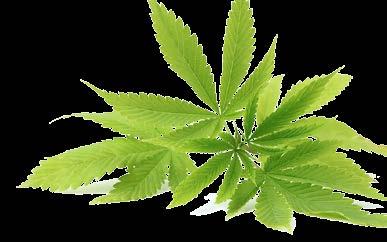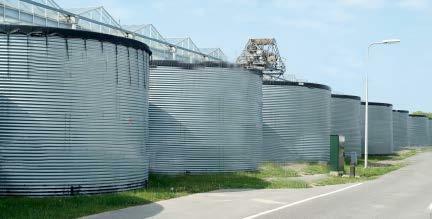
4 minute read
Greenhouse sanitation before new season production: all-important in managing pests and pathogens
Agood and easy first step in greenhouse sanitation is to physically remove all crop debris. Weeds, plant debris and unsalable plants can serve as sites for insects and mites to live and for diseases to develop, progress or spread. Remove all weeds and crop debris and place them in a tightly sealed, covered garbage bin so that pests and pathogens are not able to migrate out of the trash and into your crop (Photo 1).
Remember to remove the trash daily. Also, remove spilled media because organic residues from plants and growing media reduce the effectiveness of disinfectants (Photo 2). compost pile is at least 10 metres away from the greenhouse and not uphill or downwind from the greenhouse (Photo 3). Situating the compost pile in this manner will prevent pests from migrating from the compost pile back to the greenhouse.
Advertisement
When removing diseased or infested plants, discard them into containers or bags that are immediately adjacent to the plants and seal the container or bag to transport them out of the greenhouse immediately. In this way, inoculum or insects are contained and not spread throughout the greenhouse during transport.
Once all surfaces are free of organic matter, consider power-washing structures and walkways with soap and water when in between cropping cycles. Then, clean those same surfaces with a disinfectant. Make sure propagation or pruning tools such as knives, scissors, etc., are properly disinfected after being used on each bench or each variety or cultivar.
It is also best not to reuse pots as some diseases are capable of surviving on recycled trays or grow bags and thus infecting new crops. However, if you must use recycled containers, be sure that all organic matter is removed from these first and then disinfect them properly with a bleach, quartinery ammonium or peroxide product (Photo 4).
Some of these cleaning products have a short life span, so you may need to create new batches of disinfectant frequently while you are using it. For further information about disinfectants, consult your local co-operative or greenhouse advisor.
Also, remember to train employees to keep all irrigation hose nozzles off the ground. In fact, any tool that touches the floor should be disinfected before it touches any growing surfaces. While it may be tempting to do so, do not reuse growing media that has fallen on the floor during potting or during container filling operations due to the potential for contamination.
Organic plant debris that is left discarded in an uncovered container may be a breeding ground for pest and pathogens that could potentially infect your crop.
Before putting new plants in the greenhouse after the previous season, following these simple sanitation protocols may help greenhouse businesses prevent pest outbreaks.

Removing plant debris and spilled media from this stone greenhouse bench will make disinfectants more effective. Consider having employees and visitors, such as this greenhouse manager, wear protective gear when entering sensitive propagation areas of the greenhouse.
A compost pile that is situated too close to the greenhouse may allow pests and pathogens to migrate from the pile back into the greenhouse.
While it is best to not reuse plant containers because of potential disease carry-over, removing all organic debris from the pots and soaking them in a disinfecting solution will help minimize this disease risk.

Once the greenhouse is sufficiently sanitized, to maintain the cleanliness, consider restricting entry into growing areas to necessary personnel and supervise all visitors. Consider requiring everyone to clean their shoes before entering growing areas by first removing any soil on the shoes and then using a foot bath or foot mat that contains disinfectant.
Remember to change the disinfectant daily in these foot baths or mats. Also, make sure employees wash their hands thoroughly with warm, soapy water and perhaps other sanitizing products as well before work and at intervals throughout the day before handling plants.
Consider having employees use protective clothing, such as disposable or sterile coveralls (Photo 5), gloves or shoe coverings, during potting or transplanting, when taking cuttings, or when rouging diseased plants. Remove and dispose of used protective clothing before working with healthy plants.
Now that proper hygiene protocols are in place, be sure not to introduce new problems from plant materials being brought into the greenhouse. Purchase high quality certified, diseasefree stock whenever possible. Consider arranging a visit to your plant supplier to see their sanitation program. When new plant material is brought into your greenhouses, quarantine it in a separate area at first to inspect for disease and insects. By Kristin Getter, MSU










